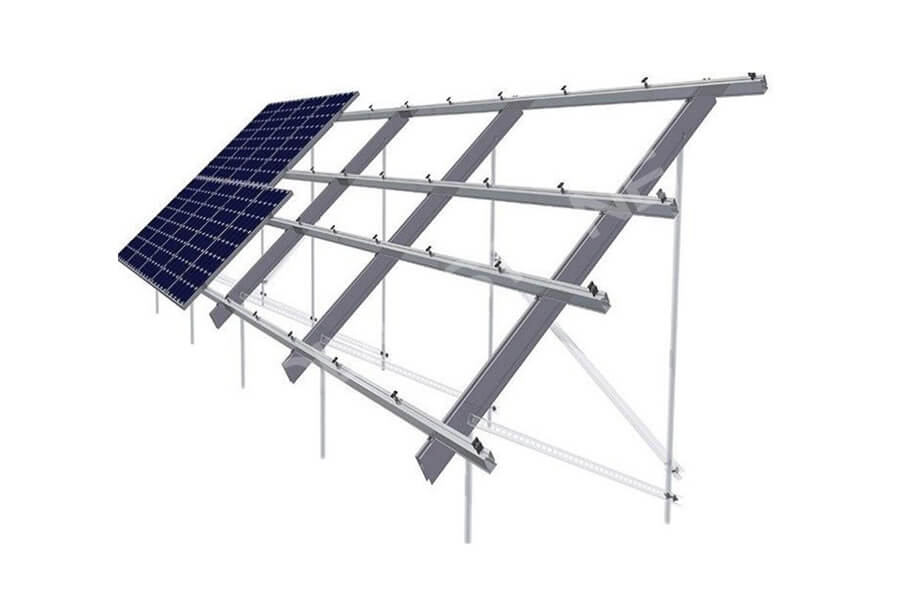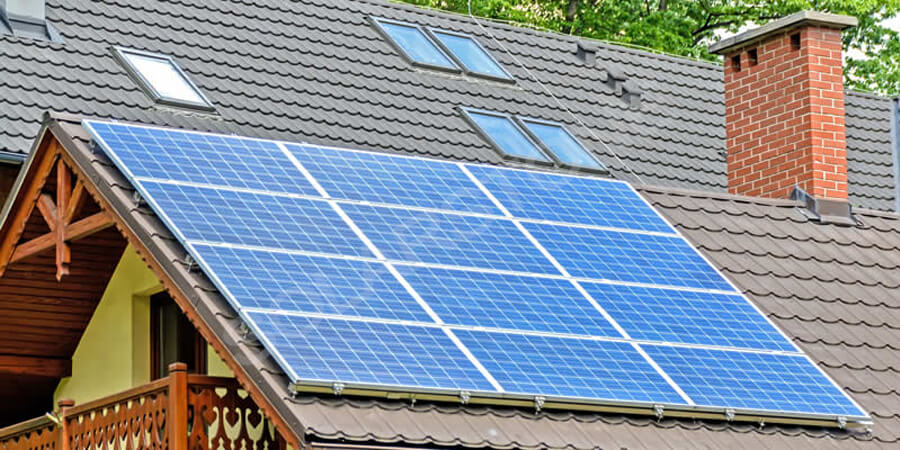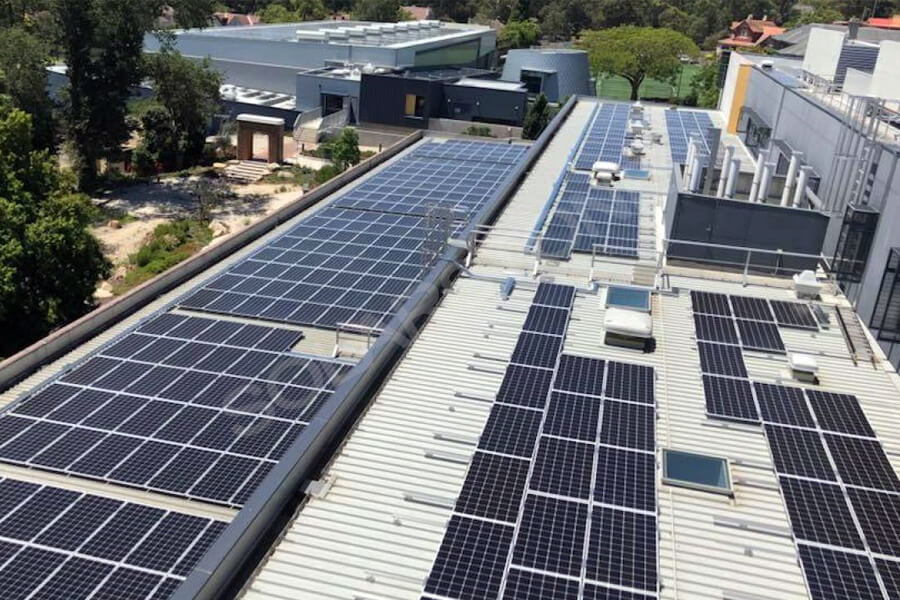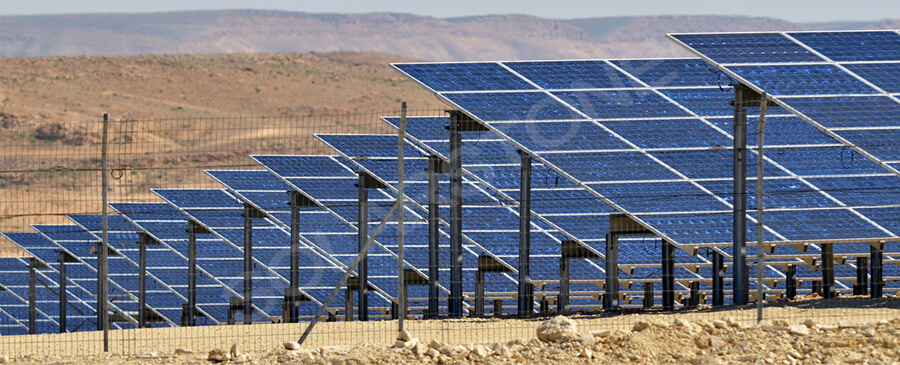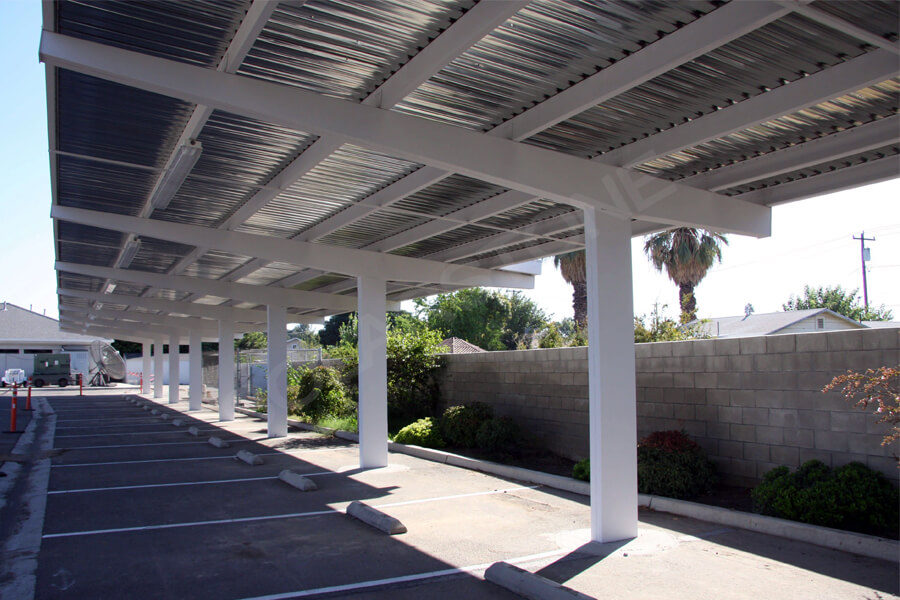What is a solar photovoltaic bracket?
The solar photovoltaic bracket is a kind of support structure. In order to get the maximum power output of the whole photovoltaic power generation system, we usually need to fix and place the solar panels with a certain orientation through the solar photovoltaic bracket.
Main parameter
- Installation location: building roof or floor
- Installation orientation: it should be South (except for the tracking system)
- Installation angle: the latitude close to the installation site
- Load requirements: wind load, snow load, earthquake requirements
- Arrangement and spacing: combined with local sunshine conditions
- Quality requirements: no corrosion for 10 years, no reduction of rigidity for 20 years, and certain structural stability for 25 years.
Material of solar photovoltaic bracket
At present, the commonly used solar photovoltaic supports are mainly composed of concrete support, steel support and aluminum alloy support.
Concrete support is mainly used in large-scale photovoltaic power stations, because of its self-weight, it can only be placed in the field, and the area with a good foundation, but with high stability, it can support the huge size of the panel.
Aluminum alloy bracket is generally used on the roof of civil buildings. Aluminum alloy has the characteristics of corrosion resistance, lightweight, beautiful and durable, but its self-bearing capacity is low, so it can not be applied to the solar power station project.
Steel support is widely used in the civil, industrial solar photovoltaic and solar power stations. Among them, the section steel is produced in factory with uniform specification, stable performance, excellent corrosion resistance and beautiful appearance. It is worth mentioning that the on-site installation of the combined steel support system only needs to use specially designed connectors to assemble the channel steel, with fast construction speed and no welding, thus ensuring the integrity of the anti-corrosion coating. The disadvantage of this kind of product is that the process of connector is complex, there are many kinds of connectors, and the requirements for manufacturing and design are high, so the price is expensive.
Classification
Photovoltaic system on the sloping roof
- It is suitable for tile roofs with different thickness, adjustable height and flexible accessories.
- The connection plate and other accessories are designed with multiple openings to flexibly and effectively adjust the position of the support
- It does not damage the roof self waterproof system
Flat roof photovoltaic system
- Large scale and orderly laying
- Stable and reliable
- Unique accessories can be developed according to the different needs of customers to meet the requirements
Large scale ground photovoltaic system
The common large-scale ground photovoltaic system generally adopts the form of concrete strip (block) Foundation (special foundation conditions need to consult professional soil mechanics designers).
- The installation is fast and can match the construction progress of large-scale ground photovoltaic power station
- The flexible adjustment forms can meet the complex and changeable requirements of the construction site
- The number of accessories is simplified to facilitate the identification and installation of on-site workers
Column solar support
In order to meet the installation requirements of large-scale solar panels, and can be used in areas with high wind speed, a ground strengthening structure is designed. When installing the bracket, there is no need to weld it on site. According to the assembly drawing provided, the bolt can be placed in the corresponding bolt hole to complete the installation.
Requirements of solar photovoltaic support
The photovoltaic support structure must be firm and reliable and can withstand such external effects as atmospheric erosion, wind load and so on. It should have safe and reliable installation, can achieve the maximum use effect with the minimum installation cost, is almost maintenance-free, and has reliable maintenance. Good support needs to have the following advantages:
- The strength of the material must be resistant to climatic factors for at least 30 years.
- It is not affected by extreme weather such as snowstorms or typhoons.
- The bracket shall be designed with slot rail to place wires and prevent electric shock.
- Power equipment should be installed in non exposed environment and easy for regular maintenance.
- It must be easy to install.
- The cost should be reasonable.
A high-quality support system must use computer simulation extreme weather conditions software to verify its design, and carry out strict mechanical properties testing, such as tensile strength and yield strength, to ensure the durability of the product.


